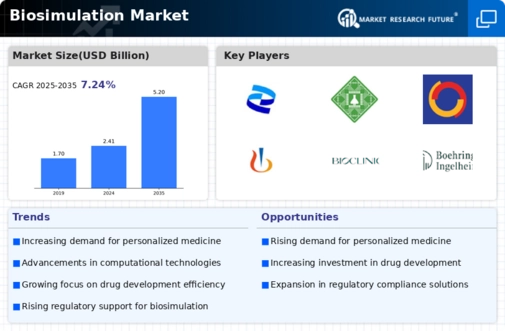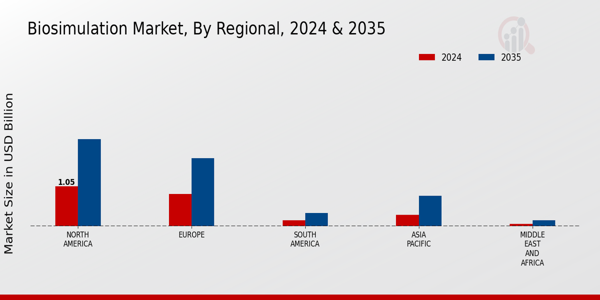Market Trends
Key Emerging Trends in the Biosimulation Market
The biosimulation market is a dynamic arena shaped by various factors influencing its growth and evolution. At its core, biosimulation involves using computer models to simulate biological processes, offering insights into complex biological systems. One key driver of market dynamics is the increasing demand for more efficient drug development processes. Pharmaceutical companies are under pressure to reduce costs and time-to-market for new drugs while ensuring safety and efficacy. Biosimulation offers a solution by enabling virtual testing of drug candidates, streamlining the drug discovery and development pipeline.Moreover, technological advancements play a pivotal role in shaping the biosimulation market landscape. As computing power continues to improve and algorithms become more sophisticated, the accuracy and predictive capabilities of biosimulation models also enhance. This encourages wider adoption across various sectors, including pharmaceuticals, biotechnology, and academia. Additionally, the emergence of high-throughput screening techniques and omics technologies generates vast amounts of data, which can be leveraged to refine and validate biosimulation models, further driving market growth.
Another significant factor influencing market dynamics is the increasing prevalence of chronic diseases worldwide. Conditions such as cancer, diabetes, and cardiovascular diseases pose significant healthcare challenges, necessitating the development of novel therapeutics. Biosimulation offers a cost-effective approach to explore potential drug targets and optimize treatment strategies, thereby addressing unmet medical needs and driving market expansion.
Furthermore, regulatory agencies are recognizing the potential of biosimulation in drug development and are increasingly incorporating it into their approval processes. This validation from regulatory bodies lends credibility to biosimulation tools and encourages their adoption by pharmaceutical companies seeking regulatory approval for new drugs. Additionally, collaborations between industry stakeholders, academic institutions, and regulatory agencies facilitate the development of standardized methodologies and best practices, further bolstering market growth.
However, the biosimulation market also faces challenges that influence its dynamics. One such challenge is the complexity of biological systems, which can pose limitations on the accuracy and reliability of simulation models. Achieving a balance between model complexity and computational efficiency remains a significant hurdle for researchers and developers in the field. Moreover, there is a need for greater interdisciplinary collaboration between biologists, pharmacologists, mathematicians, and computer scientists to overcome these challenges and advance the field of biosimulation.
Market competition is another factor driving dynamics within the biosimulation market. As the demand for biosimulation tools and services grows, numerous companies are entering the market, offering a range of products and solutions. This intensifies competition and prompts companies to innovate and differentiate their offerings to gain a competitive edge. Additionally, mergers, acquisitions, and strategic partnerships are common strategies employed by market players to expand their market presence and enhance their product portfolios.

















Leave a Comment